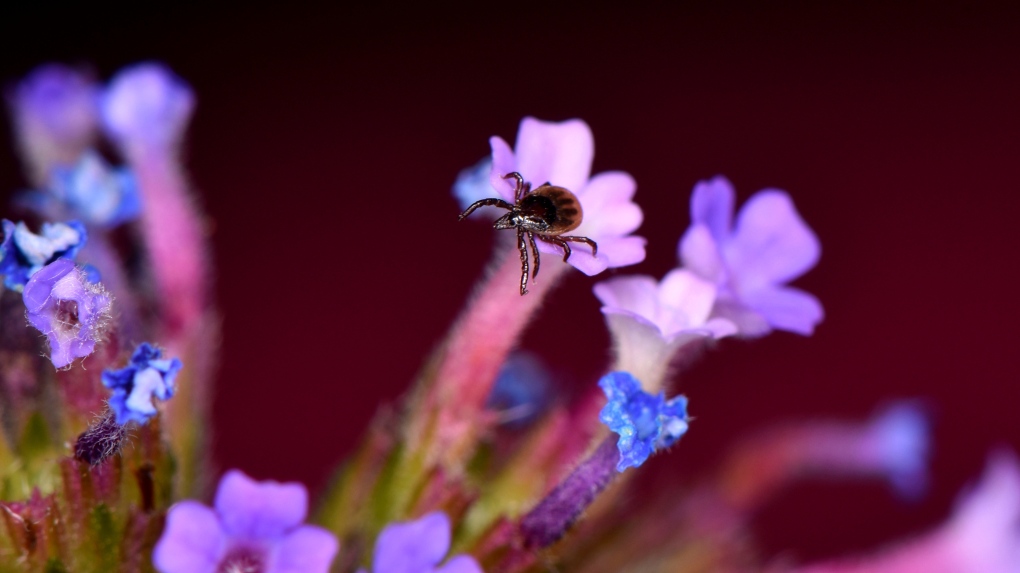Expect a bump in tick numbers in Alberta this summer: experts

The mostly warm winter and thin snow may have helped one of Alberta’s least lovable creatures: ticks.
“I wouldn’t be surprised to find it’s a bad year for the moose tick,” says Janet Sperling, an entomologist and president of the Canadian Lyme Disease Foundation.
She says past research has shown a bump in tick numbers following strong El Niño years.
Karen Marsh and Carl Johns discovered a gruesome patch on their driveway in Bragg Creek last week after returning from vacation.
It appears to be a deer or a moose bed, but it’s flecked with blood spots. Closer inspection showed it was also littered with engorged ticks.
“About the size of coffee beans and there’s 20 or 30 of these but there was blood all around,” says Johns.
In extreme cases, infested deer and moose can die after picking up too many ticks.
“There’s these strings of like hundreds and even thousands of ticks that are coming up, walking up to the back of the moose and then settling in for the winter,” Sperling says.
“Sometimes they’re just pulling so much blood out that the moose just can’t handle it.”
Alberta is home to several varieties of tick, and while the moose tick is less likely to attach itself to humans, the Rocky Mountain Wood Tick can carry serious infections, including tick paralysis and Rocky Mountain spotted fever.
The tick responsible for Lyme disease has also been found in Alberta and is generally believed to be expanding its range.
“So now when I go walking in the mountains, I’m going to say I’m going to be very careful to wear clothing that is basically covering my skin. And if it’s light-coloured, it’s even better,” says Sperling.
Mosquito repellent is also effective. But no matter what precautions people take in nature, there’s no substitute for a thorough personal inspection in the shower at home.
Alberta Environment and Parks issued its annual warning heading into last weekend, reminding people ticks are active once the snow goes away and temperatures rise above 4 C. They are active right through until the end of fall.
If you are bitten by a tick, be sure to remove it as close to the skin as possible. Take a picture or save the tick for testing.
You can also report and identify ticks through the website eTick.
View original article here Source









